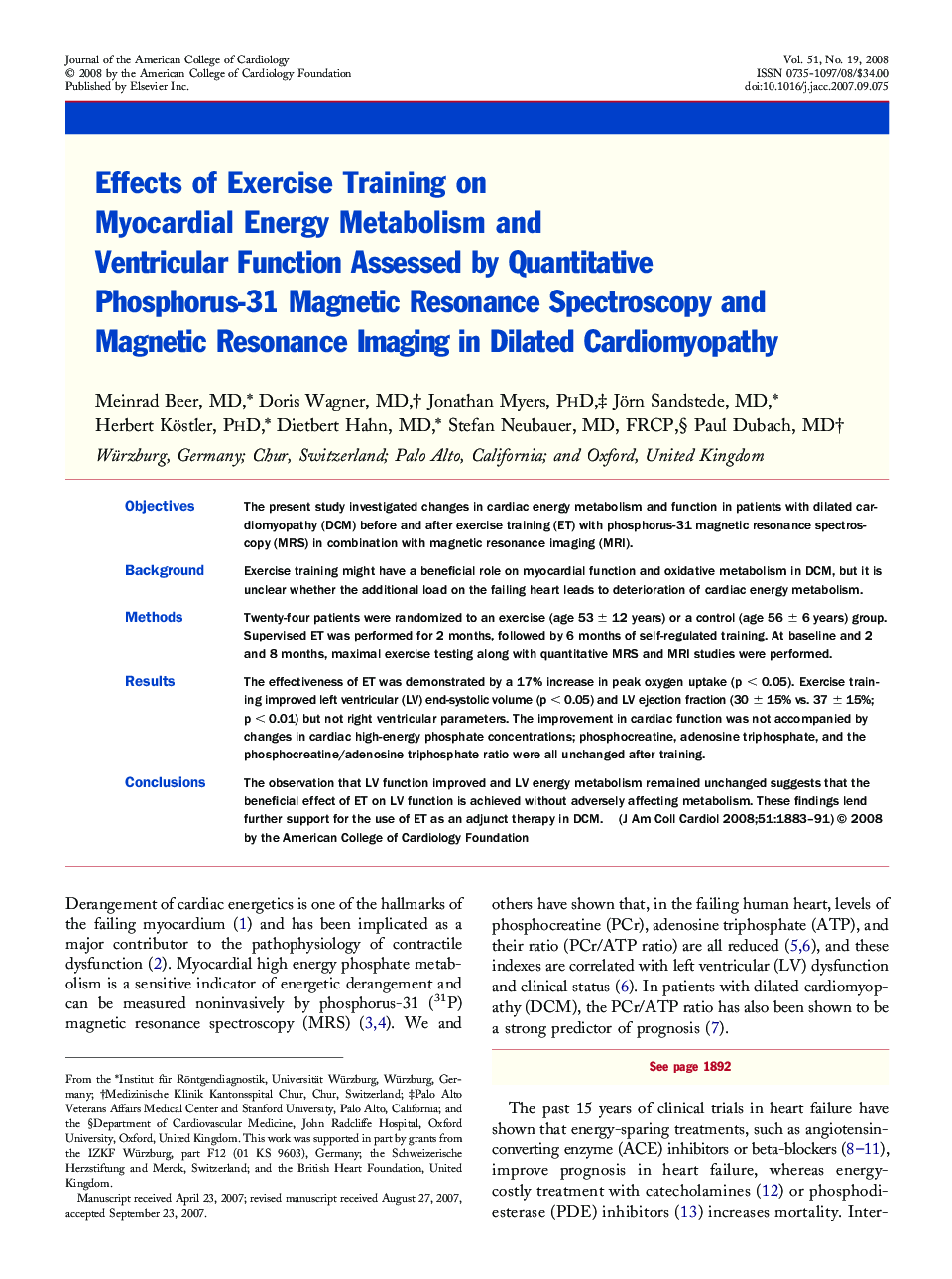| کد مقاله | کد نشریه | سال انتشار | مقاله انگلیسی | نسخه تمام متن |
|---|---|---|---|---|
| 2952471 | 1577422 | 2008 | 9 صفحه PDF | دانلود رایگان |

ObjectivesThe present study investigated changes in cardiac energy metabolism and function in patients with dilated cardiomyopathy (DCM) before and after exercise training (ET) with phosphorus-31 magnetic resonance spectroscopy (MRS) in combination with magnetic resonance imaging (MRI).BackgroundExercise training might have a beneficial role on myocardial function and oxidative metabolism in DCM, but it is unclear whether the additional load on the failing heart leads to deterioration of cardiac energy metabolism.MethodsTwenty-four patients were randomized to an exercise (age 53 ± 12 years) or a control (age 56 ± 6 years) group. Supervised ET was performed for 2 months, followed by 6 months of self-regulated training. At baseline and 2 and 8 months, maximal exercise testing along with quantitative MRS and MRI studies were performed.ResultsThe effectiveness of ET was demonstrated by a 17% increase in peak oxygen uptake (p < 0.05). Exercise training improved left ventricular (LV) end-systolic volume (p < 0.05) and LV ejection fraction (30 ± 15% vs. 37 ± 15%; p < 0.01) but not right ventricular parameters. The improvement in cardiac function was not accompanied by changes in cardiac high-energy phosphate concentrations; phosphocreatine, adenosine triphosphate, and the phosphocreatine/adenosine triphosphate ratio were all unchanged after training.ConclusionsThe observation that LV function improved and LV energy metabolism remained unchanged suggests that the beneficial effect of ET on LV function is achieved without adversely affecting metabolism. These findings lend further support for the use of ET as an adjunct therapy in DCM.
Journal: Journal of the American College of Cardiology - Volume 51, Issue 19, 13 May 2008, Pages 1883–1891